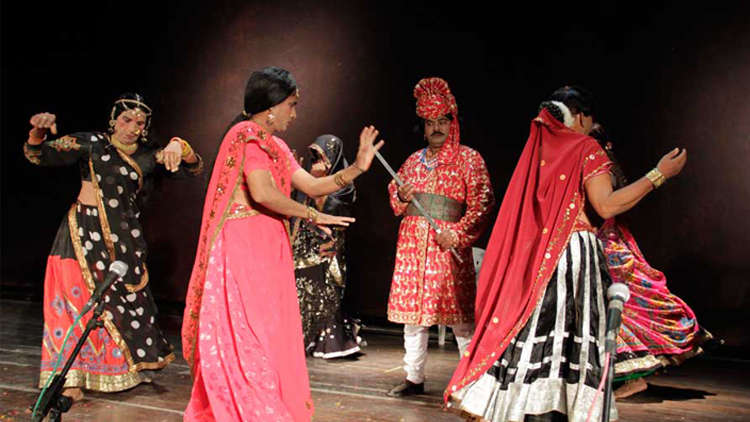Folk theatre has deeply embedded roots in the local identity and social values of Indian culture. It has been the means of mass entertainment that help Indian society grow. As an indigenous tool of intergroup, inter-village, and interpersonal communication it continued for ages.
Through folk theatre social, political and cultural issues are propagated in the form of theatrical messages so that awareness can be created among the masses, entertaining them and establishing direct communication with them.
The importance of folk theatre was duly recognized even in modern times. In the first five-year plan it was projected that people in the rural areas should be approached through traditional folk forms of communication besides using electronic media. Folk theatre as the means of traditional ways of communication has immense power to convey messages for social, economic and cultural development along with the national development.
Communities and individuals have used theatre, folk dance and theatre for social purposes such as supporting development schemes for health, family welfare campaigns and creating political awareness. Most often the folk and traditional forms of theatre are mainly narrative or vocal, i.e. singing and recitation-based like Ramlila, Rasleela, Nautanki, and Swang, etc. There doesn’t have complicated gestures or movements and elements of dance. Therefore, theatre is a great source of creating changes and development in India.
In India, State governments have been using folk theatre for the propagation of development programs amongst masses which includes awareness for the fundamental rights, health schemes, small scale industries, family planning, eradication of untouchability, women empowerment adult education and various other social economics changes.
Programs are produced using folk theatres by the government as well as by the Non- government organizations (NGO’s).
Some of the folk theatre forms like Jaatra, Tamasha, Nautanki, and the puppet shows have a high reach and effective potential. Government and NGOs use puppet shows too for social awareness and communication.

